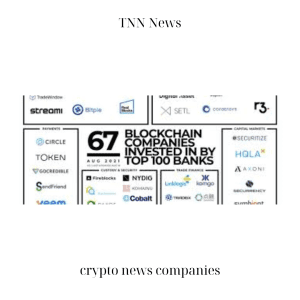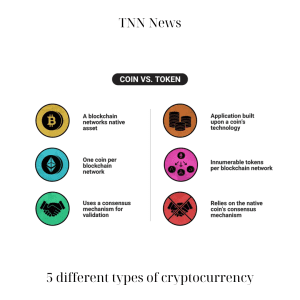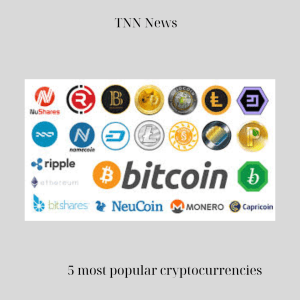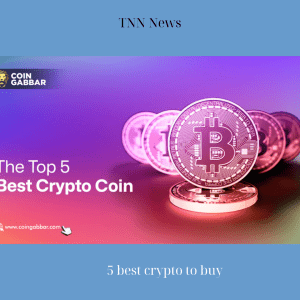By market capitalization, Cardano is one of the biggest layer-1 blockchain solutions. Input-Output, which is a company owned by Charles Hoskinson, Emurgo, and the Cardano Foundation are driving the project. Gerolamo Cardano, an Italian mathematician, gave the chain its name, and the ADA token is named after Ada Lovelace, a mathematician from the 1800s.
Cardano uses Ouroboros, a proof-of-stake (PoS) consensus mechanism that lets ADA holders give their funds to stake pools. The total stake gives each pool the power to approve transactions, make blocks, and run the network.
Ouroboros uses cryptography, combinatorics, and mathematical game theory to make sure that the protocol is secure, works well, and lasts a long time. The Ouroboros protocol pays these validators a fixed pool cost and an optional margin. Ouroboros also gives staking rewards to all delegators in a direct way.
Combinatorics is the study of counting and putting things together, while mathematical game theory looks at how rational people make decisions and how they affect each other.
Staking lets ADA holders who don’t know how to run a node or don’t want to do so take part in the network and get rewarded based on how much stake they delegate. Staking pools are a way for people who want to stake their tokens on their blockchains but don’t want to be validators on the network to do so.
This article explains the steps for staking ADA in a self-custodial wallet, as well as the tools and rewards that users can get.
What are self-custody wallets?
Self-custody is a way to store cryptocurrencies or nonfungible token (NFT) assets in a wallet that usually only the user can access and control. The other option is to hold these assets on centralized exchanges, where the users are exposed to counterparty risks if the exchange fails.
Still, most self-custodial wallets still require users to hold on to their private keys. Users need private keys in order to keep control of their crypto assets. Self-custody eliminates counterparty risk, which is present when coins are stored on centralized exchanges. This is why most people think it’s the best choice for Web3 users, especially after several exchanges went down in 2022.
Most layer-1 ecosystems have wallet solutions that are built in. For example, most Ethereum and ERC-20 assets use MetaMask, while a lot of Solana users use Phantom wallets.
When Cardano came out in 2017, IOHK’s Daedalus was able to act as a full wallet. The Yoroi light wallet came out two years after that. Since the Shelley mainnet hard fork in 2020, there have been a lot more wallets in the Cardano ecosystem.
Full-node and light wallets are available for Windows, Linux, and Mac as standalone apps, browser plugins, and mobile apps. Cardano wallet apps can also handle both single-address wallets and wallets with more than one address. Cardano works this way because it is based on UTXOs, like Bitcoin, and not on accounts, like Ethereum.
Cardano also has native tokens. Each user’s wallet can hold not only ADA but also thousands of other tokens and NFTs. Metadata additions as part of transactions are another thing that Cardano can do.
Nami Wallet focuses on non-fungible tokens (NFTs), while Flint Wallet builds connections between different chains and technologies. On the other hand, Typhon and Etrnl wallets are very advanced and have many features, such as the ability to support multiple accounts in a user’s wallet, staking, voting, and the ability to transfer an unlimited number of assets to multiple recipients in a single transaction.
One important thing about custodial wallet staking in Cardano is that the wallet owner never gives their ADA tokens to anyone else. They always have full control over them. Delegation is based on how much ADA was in the wallet at the end of the last epoch (five days).
How do I make a wallet on Cardano that I control myself?
The Yoroi wallet is just one of many ways to store your own Cardano assets. Here’s what you need to do to make a Yoroi wallet.
- The Yoroi wallet can be downloaded as a browser plugin here.
- Once the browser plugin is downloaded and installed, clicking on the plugin opens the Yoroi application page.
- On the application page, clicking the “Add New Wallet” option kickstarts the wallet creation journey.
- The next screen offers three options: Connect to hardware wallet, Create wallet, Restore wallet

- To create the first Cardano wallet, choose the “Create wallet” option.
- Next, users select “Cardano” as the currency, and the subsequent screens will prompt them to provide a name for their wallet and a corresponding password.
- The next step is setting up the recovery phrase, which must be noted down in order and confirmed in the following step.
- The wallet is now ready to accept Cardano assets.
- To add some ADA to the wallet, users can click on the “Receive” tab that gives the wallet address.
- Users can transfer ADA to the wallet from an exchange to kickstart the staking process.
How to stake ADA and what the rewards are for doing so.
As was already said, the staking of ADA by validators and other holders through staking pools is a big part of how the Cardano network validates transactions. In exchange, the network gives these stakeholders stake rewards. ADA holders who can’t run validators “delegate” their ADA to staking pools.
When staking started, pool operators and delegators got 5% of the staked coins as a reward. It has slowly gone down to around 4% over time because the planned gradual use of reserves. Out of the 34.7 billion ADA that are in circulation, almost 24.5 billion ADA, or 69%, are staked. Over 70% of ADA is bet on by people who own ADA. This is done through staking pools.
On the Cardano network, holders can choose from more than 3,000 places to stake their coins. Follow these steps from the interface of the Yoroi wallet or any other Cardano wallet to stake.
- On the wallet page, the “Delegation list” provides a choice of delegates
- Pool operators can also contribute to the pool, reflected by the “Pledge column.” A higher pledge shows higher skin in the game.
- Holders who want to stake can choose a pool by clicking the “Delegate” button.

How do I use my Daedalus wallet to stake?
Another wallet for people who use the Cardano network is Daedalus. Here are the steps to use the Daedalus wallet to stake ADA:
- The correct version of the Daedalus wallet is downloaded and installed from the official website: https://daedaluswallet.io/.
- When opened on a laptop, the app offers the option to either restore an existing wallet or create a new one.
- The user is prompted to provide a wallet name and password.
- Choosing the create option gives a 24-word recovery phrase that the user must note down and confirm.
- The wallet is created and syncs with the blockchain.
- Once the syncing is complete, the user must click on the “Staking” tab to start the staking process.
- Clicking on the “Delegation” button takes the user to the delegation center, where they can choose from several staking pools.
- The stake pool is chosen, the amount of ADA the user wants to stake is entered, and the confirmation is submitted.
- Once the transaction is processed, the user’s ADA will be delegated to the pool.
- From now on, the selected pool takes care of packaging transactions into blocks and validating the chain.
- At the end of each five-day epoch, the Ouroboros protocol, not the pool’s operator, takes automatically distributes the rewards from the reserves to all ADA wallets.
Common problems with self-custodial ADA staking and how to fix them
Here are some of the most common problems users may run into when staking ADA in a self-custodial wallet, along with some possible solutions:
- Stake pool not found: If a user can’t find a good stake pool to delegate to, they can use a stake pool search tool or change the parameters of their search to find more options. There are dedicated stake pool portals like PoolTool and explorers like Cardanoscan and Cexplorer that give a more detailed look at the history and performance of all stake pools.
- Wallet synchronization issues: If a user’s wallet isn’t syncing correctly or showing wrong information, the user can try restarting the wallet or using a different device. They can also check to see if there are any updates or patches for the software in their wallet.
- Transaction errors: If a user gets an error when trying to delegate their ADA or withdraw their rewards, they need to make sure they entered the right information and have enough money in their wallet to cover any transaction fees. Users can also try using a different browser or clearing their cache.
- Staking rewards not received: For users to get rewards for staking, they must make sure that their delegation is active and that the pool they delegated to is making blocks. If no blocks are made, no rewards will be given. Users should also try refreshing their wallet or using the blockchain explorer to make sure that the rewards have been given out.
Users should know that if they can’t use one of the ADA wallet apps, they can always use the recovery phrase to restore the wallet in another wallet app, giving them access to all their ADA and native assets. If users have any other problems staking ADA in a self-custodial wallet, they can contact the support team for their Cardano wallet app or look for help in online forums and communities.
Also, users should never give their recovery seed words or a screenshot of their wallet to anyone who says they can help them. Also, users shouldn’t believe anyone who tells them to move their money to a new address, and they should be on the lookout for scammers.





